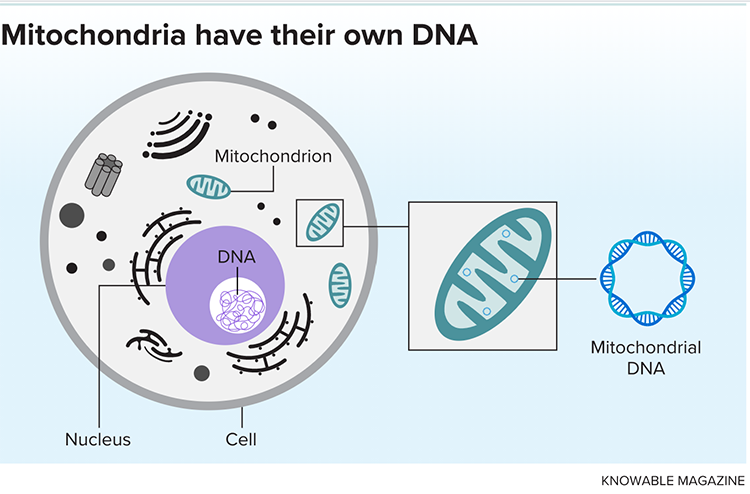
Mitochondria contain their own DNA, known as mitochondrial DNA (mtDNA), which is distinct from the nuclear DNA found in the cell nucleus. This mtDNA is inherited exclusively from the mother and plays a crucial role in energy production within cells.
Mitochondrial DNA is circular and contains about 16,500 base pairs, encoding 37 genes essential for mitochondrial function, including proteins involved in the oxidative phosphorylation process that generates ATP, the energy currency of the cell. Unlike nuclear DNA, which is inherited from both parents, mtDNA follows a maternal inheritance pattern due to the systematic elimination of paternal mitochondria during fertilization. This unique inheritance allows researchers to trace maternal lineages and study human evolution.
The endosymbiotic theory suggests that mitochondria originated from ancestral bacteria that were engulfed by early eukaryotic cells. Over time, most mitochondrial genes have been transferred to the nuclear genome, but some remain in mtDNA due to their critical roles in mitochondrial function.
In summary, while mitochondria are not your DNA in the sense of being part of your nuclear genetic material, they do possess their own distinct genetic material that is vital for cellular energy metabolism.
Authoritative Sources
- Morton, Hallie, et al. "Defective mitophagy and synaptic degeneration in Alzheimer’s disease: Focus on aging, mitochondria and synapse." Free Radical Biology and Medicine 172 (2021): 652-667. [Link]↩
- Taylor, Robert W., and Doug M. Turnbull. "Mitochondrial DNA mutations in human disease." Nature Reviews Genetics 6.5 (2005): 389-402. [Link]↩
- Holmlund, Teresa. Molecular mechanisms of mitochondrial DNA replication. Karolinska Institutet (Sweden), 2009.↩
- Wikipedia contributors. "Mitochondrial DNA." Wikipedia, The Free Encyclopedia. [Link]↩


Answer Provided by www.iAsk.ai – Ask AI.
Sign up for free to save this answer and access it later
Sign up →